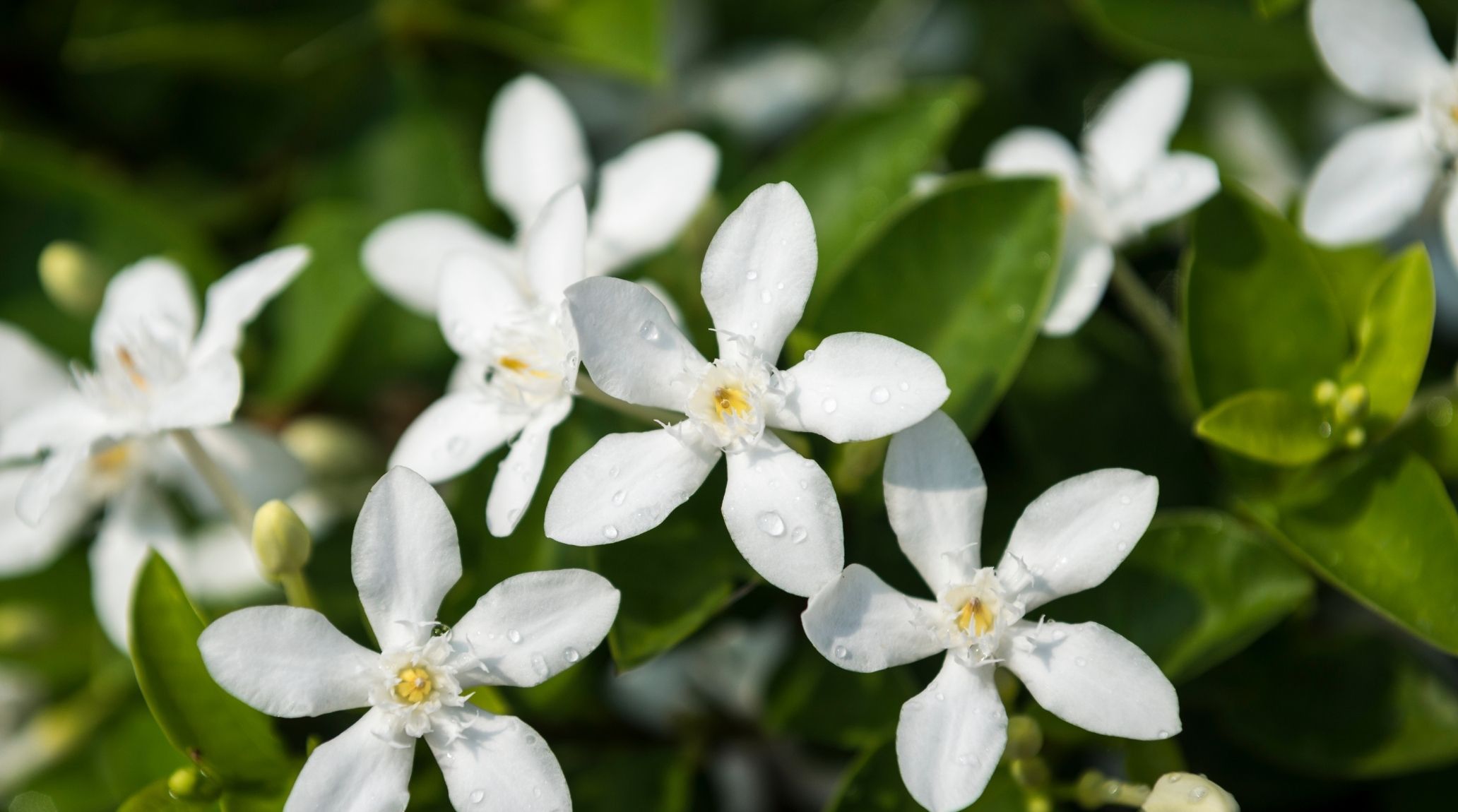
“
Jasmine flowers are enchanting plants that captivate the senses with their beauty and fragrance. These delicate blooms hold many secrets, from their night-blooming habits to their role in ancient medicine. Let's dive into the world of Jasmine and uncover 20 Fascinating Jasmine Facts that will intrigue and inspire curious young gardeners.1
1
”
The name "Jasmine" is derived from the Persian word "Yasmin," which means "gift from God." It truly lives up to its name with its heavenly scent and beautiful blooms, often considered a divine addition to gardens. 1
Did you know that many Jasmine flowers bloom at night? They release their enchanting fragrance in the evening making the night air smell sweet and magical, and providing a unique sensory experience under the stars. 2
In some regions, deer and small mammals like rabbits or squirrels might occasionally nibble on jasmine plants, especially if their usual food sources are scarce. Jasmine is not a primary food source but can be eaten if other options are limited. 3

Jasmine flowers are famous for their essential oil, which is widely used in perfumes, aromatherapy, and cosmetics. It takes thousands of flowers to produce just a tiny amount of this precious oil, highlighting its value and rarity.
Jasmine tea is a delightful beverage enjoyed by many. The tea is made by mixing tea leaves with Jasmine flowers, infusing it with a delicate and refreshing flavor that provides a soothing and aromatic drink.4
In traditional medicine, Jasmine has been used for centuries. It is believed to have calming properties and is used to treat various ailments, including anxiety and insomnia, showcasing its therapeutic benefits. 5
Jasmine plants are natural climbers. They can grow as vines and climb on trellises, walls, and fences, adding a touch of beauty to any garden and creating a picturesque and fragrant landscape. 6
While Jasmine is often associated with tropical climates, some varieties can also thrive in temperate regions. This adaptability makes Jasmine a popular plant worldwide, capable of flourishing in diverse environments. 7
Jasmine flowers attract butterflies and bees, making them excellent plants for pollinator gardens. These pollinators help in the reproduction of plants and contribute to a healthy ecosystem, enhancing garden biodiversity. 8

Some varieties of Jasmine, like the Star Jasmine, have star-shaped flowers that look like tiny stars twinkling in the garden. Their shape and scent make them a favorite among gardeners, creating a celestial garden atmosphere.
In some cultures, Jasmine flowers are used in cooking. They can be added to dishes as a garnish or used to flavor desserts, adding a unique and aromatic touch to culinary creations and enhancing the dining experience. 9
Many Jasmine plants are evergreen, meaning they retain their lush green leaves throughout the year. It makes them a popular choice for adding greenery to gardens and landscapes, providing year-round beauty. 10
At night, jasmine flowers emit a stronger fragrance as cooler temperatures cause them to open more fully. This increased openness not only enhances their scent but also reveals their star-like petals, making the plant's aroma more noticeable. 11
Jasmine seeds need specific temperature conditions to germinate effectively. They generally require a warm environment, with temperatures ranging between 70-80°F (21-27°C), to initiate the sprouting process. 12
Jasmine oil is commonly used in skincare and haircare products for its soothing properties. Its inclusion helps to hydrate, balance, and revitalize the skin while also promoting healthy, shiny hair, making it a popular choice in cosmetic formulations. 13
Despite their small size, jasmine seeds can remain viable for several years if stored properly. Keeping them in a cool, dry place ensures they stay dormant until planting conditions are ideal. 14

In the Victorian era, Jasmine was used to create exquisite perfumes. The fragrance of Jasmine was highly valued and considered a luxury, often associated with royalty and high society, reflecting its esteemed status.
Once established, Jasmine plants can tolerate periods of drought. This resilience makes them a low-maintenance choice for gardens, especially in areas with occasional water scarcity, offering beauty without extensive upkeep. 15
Jasmine flowers typically have a short lifespan, blooming for about 3 to 5 days. However, jasmine plants can live for several years, with new blooms appearing throughout their growing season, often from spring to early fall, depending on the variety. 16
Jasmine is the national flower of several countries, including Pakistan, Indonesia, and the Philippines. It holds cultural significance and is celebrated in various festivals and traditions, symbolizing national pride and heritage. 17


